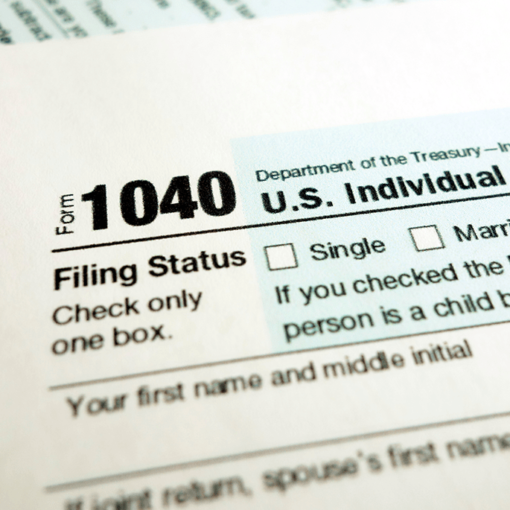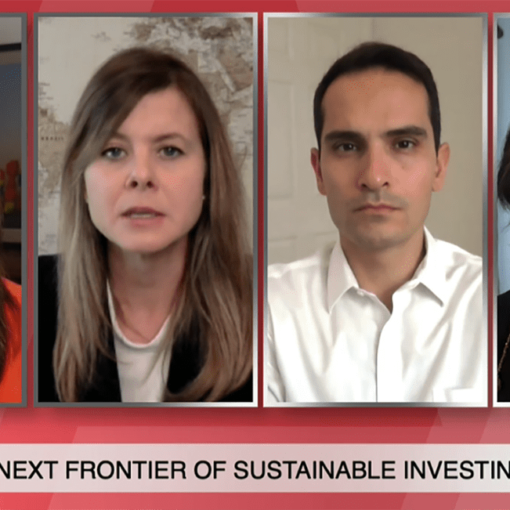[ad_1]
Digital assets have had a wild ride over the last year. Several centralized crypto companies, from the hedge fund Three Arrows Capital to the crypto exchange FTX, have failed, while the SEC, the Commodities Futures Trading Commission (CFTC), and other US agencies have initiated a regulatory onslaught against crypto-related businesses. Further, amid high inflation, a banking crisis, and a potential recession, all risk assets face an uncertain macro future.
But we can’t forget the long-term asymmetric opportunity that digital assets may offer. Fundamental investors are searching for the digital projects that stand the best chance for mass adoption despite the negative overhang. With that in mind, five important themes have emerged in digital asset markets that could lead to wider blockchain adoption in the medium to long term.
1. The Big Players Are Here: Web2 Partnerships and the Next Wave of Web3 Users
To date, digital asset adoption has been mostly the domain of native Web3 innovators. To continue along this curve, more early adopters need to come onboard. Several companies with pre-crypto origins made significant progress in 2021 and 2022 through initiatives that helped expand Web3’s user base beyond crypto natives.
Four projects in particular have leveraged Polygon, an Ethereum-based scaling solution, to facilitate these efforts.
Polygon + Projects
In many of these cases, customers don’t even know they’re interacting with blockchain technology. Web2 companies have effectively abstracted the blockchain away. To date, Web3 onboarding has been fairly technical; by making it less so, brands can help encourage mass adoption.
Google and Amazon have also seen the value of partnering with blockchains for node operation. Amazon Web Services has paired up with Avalanche and Google with Solana.
Why are all these brands implementing Web3 plans? To improve their user experience and customer relationships, attract Gen-Z digital natives, and unlock alternative sources of revenue, among other reasons.
Amid continued positive momentum in 2023, we expect more big brands to follow their lead and develop their own blockchain initiatives.
2. Ethereum Dominates, But Must Scale to Service Mass Adoption
With 60% of decentralized finance (DeFi) total value locked (TVL) and 85% of NFT transaction volume, Ethereum is the clear leader among smart contract platforms. However, should millions of people stampede to Web3, the Ethereum network could be overwhelmed and the price to transact on its blockchain could become prohibitively expensive. So, how can blockchains scale up? We see three possible approaches.
Three Blockchain Types

- Monolithic blockchains like Solana offer execution, settlement, consensus, and data availability all in one. Apps are built directly on top of the blockchain. But this can create scalability issues — the so-called blockchain trilemma — if the blockchain is both decentralized and highly secure.
- Modular blockchains like Ethereum 2.0 separate the execution, settlement and consensus, and data availability layers. “Layer 2s,” in the form of sidechains and rollups, help the original “Layer 1” blockchain scale without sacrificing decentralization or security. Applications are built on top of both Layer 1s and Layer 2s.
- Universes of interconnected blockchains like Cosmos are ecosystems with relatively secure inter-blockchain communication protocols, so different blockchains can exchange data and value between them.
Due to the Lindy effect and the current dominance of Ethereum and its Layer 2s in new project launches, we anticipate modular blockchains to prevail. Though smaller positions in the other blockchain-scaling models, especially those with solid tokenomics and attractive relative valuations, may be a good hedge.
3. Tokenization Will Bring Various Exogenous Assets On-Chain
Tokenization creates digital representations of various assets, from securities and funds to artwork and other collectibles, and is among the most important current Web3 narratives. The benefits of tokenizing assets explain why this theme is gaining such traction.
The Benefits of Tokenization
| Tokenized Securities |
Tokenized Funds |
Tokenized Real Estate, Art, and Other Collectibles |
|
| Better Accessibility |
Opens up securities markets to a global pool of investors |
Makes institutional private market strategies more accessible to individual investors with lower investment minimums, improved onboarding, and potentially better liquidity |
Allows for fractionalization |
| Better Efficiency |
Increased liquidity, faster settlement, and lower costs |
Transforms relatively liquid resources into easily tradable goods |
The opportunity is massive. According to HSBC estimates, tokenized market volume will reach $24 trillion by 2027.
How is this theme expressed in liquid token portfolios or non-fungible assets (NFAs)? Through smart contract platforms that provide the public blockchain and settlement infrastructure for these tokenized assets. KKR tokenized its health care fund and Hamilton Lane its $2.1B flagship fund through Avalanche and Polygon, respectively. Decentralized applications (DApps) — Maker, Centrifuge, Maple Finance, and Ondo Finance, for example — help users bridge real world assets (RWAs) to DeFi.
4. RWAs Can Help Counter DeFi’s Circularity
DeFi’s “self-reference” has been a perceived shortcoming of the sector. For example, a DeFi user may take out a loan on lending protocol Aave for leveraged trading of assets on the Uniswap decentralized exchange.
We are bullish on opportunities that break this circularity problem by integrating outside information and “real world” use cases onto closed blockchain networks. There are many recent examples of non crypto-native businesses turning to DeFi.
Through the lending protocol Maker, users can borrow their DAI stablecoins by locking collateral in Maker’s smart contracts. Built on Ethereum, Maker determines which collateral they accept as well as the collateralization ratios for each collateral type. Most collateral on Maker today is in the form of stablecoins, like USD Coins (USDCs) pegged to the US dollar, but RWAs are a fast-growing segment. At the beginning of Q4 2022, RWAs made up only 2% of the collateral on Maker, but that has grown to 13%, and RWA income currently accounts for over half of Maker’s revenue. Indeed, RWA collateral now includes US Treasury bonds through MIP65, loans from Huntingdon Valley Bank in Pennsylvania, and investment grade asset-backed securities through BlockTower Capital.
RWA Activity


Built on the Ethereum and Solana blockchains, Maple Finance is another lending protocol that provides infrastructure for credit experts to run on-chain lending businesses. Earlier this year, it announced a $100 million receivables financing pool, enabling Intero Capital Solutions to borrow USDC against receivables and investors to lend their USDC for a 10% targeted yield.
5. NFTs: The Underappreciated Upside
NFT activity boomed in 2021 with sales volume and unique buyers growing 41,784% and 6,959%, respectively, according to CryptoSlam. In 2023, NFT activity is on the upswing again thanks to two important events: the disruptive launch of Blur, an Ethereum NFT marketplace, and the explosive popularity of bitcoin ordinals, through which users can inscribe text, images, and other data on satoshis, or smaller bitcoin units.
NFT Activity

The 2021 boom recalls that of the initial coin offerings (ICOs) in 2017 and serves as a DeFI proof of concept. “Profile picture” NFTs of cartoon apes and pixelated punks notwithstanding, we believe a much larger digital collectible market spans the following industries:
- Gaming: Through NFTs, gamers can more fully own their in-game land, avatars, and other assets they have earned and invested in. Gaming NFTs could be sold, exchanged, and moved among different metaverses so that users can transport their digital assets from Game A to Game B rather than starting from scratch.
- Music: Fans could invest in and support their favorite musical artists through NFTs. For example, they could purchase a share of an artist’s song that entitles them to royalty rights whenever that song is played on streaming services. NFTs could also unlock real-world experiences for fans, such as early access to new track releases or meet-and-greets with the artist.
- Ticketing: NFTs also have applications in the live events industry. Through Ticketmaster’s partnership with the blockchain Flow, event organizers can now issue NFTs around live shows. Similar to music NFTs, these applications could enhance fans’ experiences and serve as digital collectibles. Ticketmaster’s website now features a wallet and NFT marketplace so that collectors can share and trade.
- Social Media: The centralized Web2 social media giants profit from content that they do not create. Because of social media’s current ad-driven business model, actual content creators go underpaid or are not paid at all. By storing their social media on a public blockchain through NFTs that represent profiles, likes, comments, and other activity, content creators can, through social tipping, secondary marketplaces for profiles, and other concepts, better capture value for their work.
- Domain Names in Web3, such as runa.eth, resemble their Web2 counterparts like runa.com: They can serve as websites and email addresses. These domain names are technically represented as NFTs on blockchains and offer additional use cases — for data storage, for example, so users can then give applications permission to access certain information. In this way, users can carry their data around the web via NFTs and have fuller possession of their online identity.
To be sure, the digital asset space is still early in its development. While no longer in its infancy, it is far from a mature market. As such, it remains both highly speculative and ripe with potential.
That is why it is worth keeping an eye on — and approaching with caution.
If you liked this post, don’t forget to subscribe to the Enterprising Investor
All posts are the opinion of the author. As such, they should not be construed as investment advice, nor do the opinions expressed necessarily reflect the views of CFA Institute or the author’s employer.
Image credit: ©Getty Images/ spainter_vfx
Professional Learning for CFA Institute Members
CFA Institute members are empowered to self-determine and self-report professional learning (PL) credits earned, including content on Enterprising Investor. Members can record credits easily using their online PL tracker.
[ad_2]
Source link











 Bitcoin
Bitcoin  Tether
Tether  XRP
XRP  USDC
USDC  Dogecoin
Dogecoin  Lido Staked Ether
Lido Staked Ether  LEO Token
LEO Token